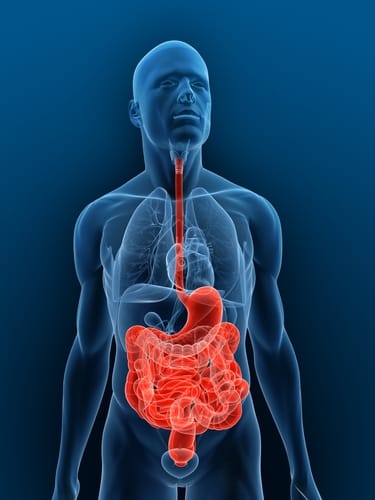Crohn’s disease is a type of inflammatory bowel disease, which is becoming increasingly prevalent in the developing world. It’s an immune-related disease, causing abdominal pain, diarrhea, fever and weight loss. Currently, there’s no cure available and patients are treated symptomatically. While this can achieve remission, the standard treatment for severe cases is costly and may have serious side-effects. Medical researchers from the University Hospital in Liège (CHU), guided by Prof. Edouard Louis (head of the department of Gastroentorology), have recently secured nearly 6 million euros in EU funding for their project ‘BIOCYCLE’ that aims to test and introduce a new treatment regime to overcome these problems.
The exact cause of Crohn’s disease is still unknown, but it is believed to be due to a combination of environmental factors and genetic predisposition. Patients have an impaired innate immunity, leading to a sustained microbial-induced inflammatory response in the gastro-intestinal tract. While there is no cure available, the symptoms can be relieved by certain lifestyle changes such as dietary adjustments and smoking cessation. These life-style changes can also be supported by symptomatic treatment with pharmaceuticals that must be used consistantly to stay symptom-free.
High costs for current therapy
Typically patients are initially treated with steroids, switching to an immunosuppressant if steroid therapy fails. If this immunosuppresant therapy also fails, physicians will treat patients with anti-tumor necrosis factor (TNF) (1). Clinical trials have shown that combination therapy with an immunosuppressant and anti-TNF is the most effective treatment (2). The goal of this combination therapy is to induce long lasting remission in the patient, where not only the symptoms disappear but the damage to the intestine can heal completely.
There are two main drawbacks to this therapy. Firstly, patients have an increased risk of infections and cancer. These side-effects are typically associated with the use of immunosuppressants as the protective effect of the immune system is inhibited by these drugs. However, as combination therapy was introduced into clinical practice less than five years ago, these issues have not yet been fully confirmed. Secondly, the price of the treatment is very high. The daily cost of anti-TNF treatment was estimated to cost over 2.700 dollars for the average patient in the US in 2010 (3).
Personalized treatments result in lower cost
The CHU is taking on the challenge to improve both the safety and cost of Crohn’s disease treatment, while maintaining the same level of efficacy. Together with a strong international consortium, funding has been obtained from the EU for their action entitled BIOlogical therapy CYCLEs towards tailored, needs-driven, safer and cost-effective management of Crohn’s disease (BIOCYCLE). In this project, the concept of ‘Treatment Cycles’ is introduced, characterized by alternating periods where both drugs are administered and periods where only either anti-TNF or immunosuppressant is used.
The core of the project is a randomized controlled trial where Crohn’s patients who are being treated with combination therapy and who are in sustained remission without the use of steroids for at least six months, will be randomized into three arms. In the trial, the drugs will be stopped in an alternating manner, so patients will receive either the immunosuppresant or anti-TNF. The combination therapy is continued as a control.The enrollment of 300 patients is planned in France, the UK, Sweden, Germany and Belgium. The primary objective is to assess the relapse rate and the time spent in remission in the three arms. Classical biomarkers, such as CRP and calprotectin, as well as new biomarkers will also be assessed in their ability to correctly predict the risk of relapse and the disease progression (4).
In parallel, both the health and economic impact of treatment cycles will be evaluated. This will help to determine the most cost-effective treatment method. The high price of the drugs may be compensated by the prevention of hospitalizations and disability costs. This evaluation will result in cost models leading to specific recommendations based on patients’ characteristics and risk profiles.
To facilitate implementation, patients, caregivers and healthcare systems will be surveyed to assess their willingness to adopt this new treatment regime. This not only creates awareness among the key stakeholders but also allows the researchers to identify the main hurdles the technology will face.
If the concept of treatment cycles proves to be effective in reducing the impact of therapy on Crohn’s disease patients and the healthcare system overall, then this concept will most likely be introduced into clinical practice. However, patients will have to stick to their combination therapy for a few more years as the project is scheduled to end in 2021.
References
(1) JF Colombel (2012) When should combination therapy for patients with Crohn’s disease be discontinued? Gastroenterol Hepatol, 8(4): 259-262.
(2) JF Colombel et al. (2010) Infliximab, Azathioprine, or Combination Therapy for Crohn’s Disease. N Engl J Med, 362: 1383-1395.
(3) DJ DeNoon (2010). Combination therapy treats Crohn’s disease.
(4) BIOCYCLE PROJECT


